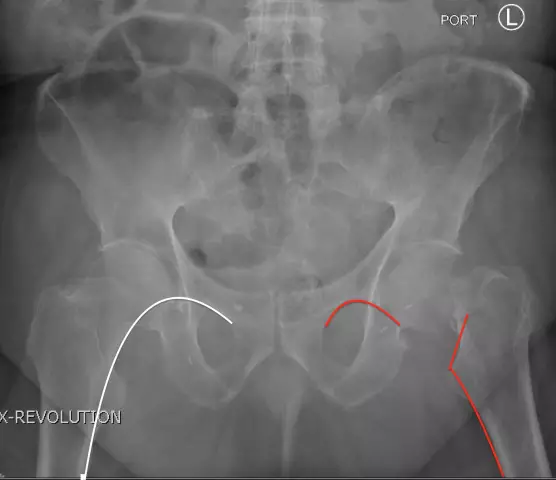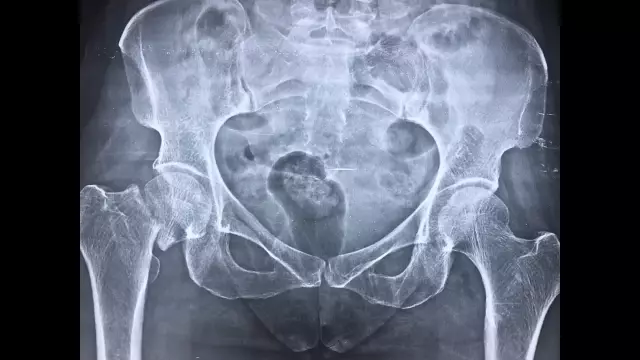- Author Curtis Blomfield [email protected].
- Public 2023-12-16 20:44.
- Last modified 2025-01-23 17:01.
Older people are more likely to be injured than others. This is primarily due to a decrease in the strength of bone tissue due to age-related changes occurring in the skeleton. The most common and at the same time the most insidious injury is a fracture of the femoral neck in the elderly. It not only requires complex treatment and long-term rehabilitation, but also causes severe suffering to patients. A fracture can be accompanied by a variety of complications, which leads to poor bone fusion. In addition, against the background of a fracture, various diseases can worsen. All this often leads to the fact that the patient is bedridden, infirm and in need of round-the-clock care. Sometimes a fracture of the femoral neck in old age leads to death. Fracture types:
- median (also called medial), when the integrity of the bone is broken above the place where the joint capsule is attached to the thigh;
- lateral (or lateral), when the integrity of the bone is broken below the placewhere the joint attaches to the hip.
All lateral fractures are extra-articular, while median fractures are intra-articular.

Fracture of the femoral neck in the elderly: the main symptoms
Immediately after the injury, the victim begins to experience pain in the groin area, at the moment of movement they intensify. The limb, which is damaged, turns outward somewhat, which can be seen by looking at the foot. Even despite the presence of a fracture, a person can walk, unbend and bend the leg. The only thing he can't do is keep his leg upright in a straightened position. In addition, the injured limb becomes somewhat shorter, since with this type of injury, the muscles begin to contract differently. Another sign of a fracture is that if the victim taps lightly on the heel of the injured leg, the pain will increase.
Fracture of the femoral neck in the elderly: first aid
Of course, the treatment of such an injury requires hospitalization. Before the ambulance arrives, the victim can be helped by laying him on a flat surface and fixing the limb with a splint so that both the knee and hip joints are simultaneously captured. Do not try to bring the displaced leg into a normal position.

Fracture of the femoral neck in the elderly: treatment options
Due to the age of the patient, treatment is often difficult. This is due to the longsplicing of bones (from 6 to 8 months), inadmissibility for a long time to adhere to bed rest. The most optimal way to cure a hip fracture is surgery. In this case, surgical intervention may consist of osteosynthesis or arthroplasty. In the first case, bone fragments are fixed with metal screws, thus helping them to grow together favorably. Unfortunately, this method is often not suitable for people over the age of sixty, in which case a joint replacement is arbitrarily called arthroplasty. It also happens that both types of surgical intervention pose a threat to the patient's life. Then the therapy is carried out non-surgically and is aimed at comparing bone fragments without violating the integrity of the skin and doing exercise therapy.






